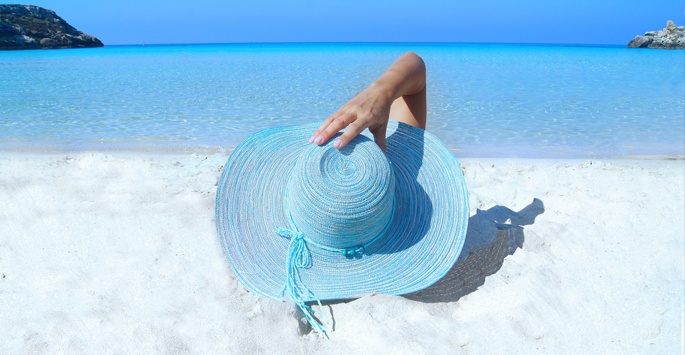We are all guilty of spending a little too much time in the sun at one point or another, but how many of us understand the real damage that occurs when your skin gets sunburned? In this week's blog we discuss some common myths about sunburns and tanning that we hope to clear up.
Myth 1: "It's just my base tan."
There is no such thing as a base tan—it's UV damage, plain and simple. Any discoloration on your skin, whether it is tan or red, is your skin's response to UV exposure and a signal of damaged skin cells. The redness of a sunburn comes from excess blood in your capillaries, and any amount of discoloration, whether it is bright red or mildly tanned, can lead to skin cancer over time. The danger of this myth is how it downplays the damage being done, as if it is merely our way of applying a "top coat" of color, and implies that any additional tanning on top of the so-called base tan is somehow safer than that initial burn. Anyone with any degree of discoloration should take measures to protect their skin moving forward. Further UV exposure to already damaged skin cells can increase your risk of melanoma dramatically, and as little as five sunburns can double your risk.
Myth 2: "Aloe can 'cure' a sunburn."Aloe vera certainly has anti-inflammatory benefits and works wonders for soothing burnt skin, however, it does not provide a cure for skin damaged by UV rays. It simply relieves the symptoms of the burn. The damage caused by UV exposure cannot be undone with aloe alone, and the key is avoiding the damage before it occurs. The unfortunate truth is that sun damage is not merely skin deep—it has the ability to alter DNA, leaving you with wrinkles, sun spots, and even skin cancer. There are ways to reverse the damage though by using sunblock daily, which will eventually allow your skin's cells to repair and reverse some of the damage accumulated over the years as long as you are diligent about protecting yourself from further UV exposure. Lasers are also an amazing way to start fresh with sun damaged skin, removing damaged cells and stimulating collagen growth to help with the signs of aging that can accompany a sunburn.
Myth 3: "SPF 80 is safer than SPF 30."
While there is an ounce of truth that the percentage of UV protection increases with the number, it isn't by much. SPF 15 protects against about 93% of UV rays, whereas SPF 50 protects against approximately 98%. The most important factors to consider are applying generous amounts, re-applying it frequently, and checking to make sure your sunscreen is broad spectrum (meaning it protects against UVA and UVB rays). Both UVA and UVB rays can cause skin cancer, with UVA penetrating deeper into the skin and UVB penetrating at a more superficial level.
Myth 4: "I don't have to re-apply waterproof sunscreen."
No sunscreen is truly waterproof, and as of 2011 the FDA banned the use of the terms "waterproof" and "sweat-proof" on sunscreen labels. Manufacturers can state that a sunscreen is water resistant for up to a certain number of minutes based on standardized lab testing, however, anyone going in the water should re-apply sunscreen immediately after getting out.
So what can be done to help sun damaged skin?
If you know you've had sun damage, there is hope for reversing it. Eryfotona Actinica, a broad spectrum sunscreen by ISDIN, helps repair actinic damage and contains DNA Repairsomes™ and antioxidants. It helps to slow aging, provides protection against both UVA and UVB rays, and is available in our office.
Talk to Us
Interested in making an appointment for a skin cancer screening?
Contact us today to schedule your visit.


